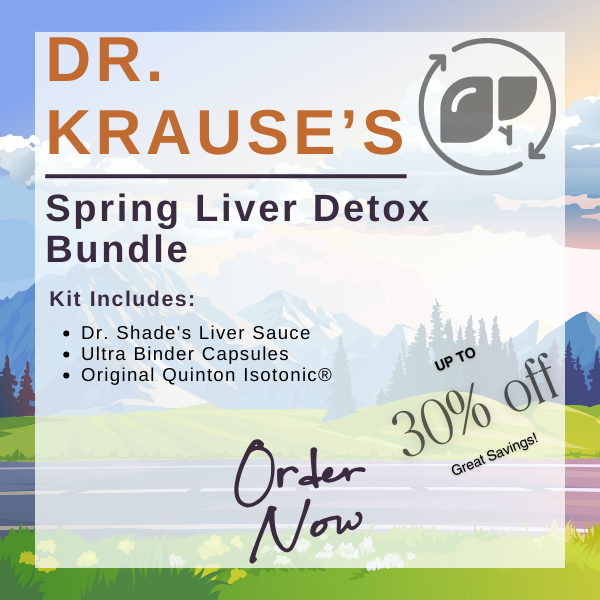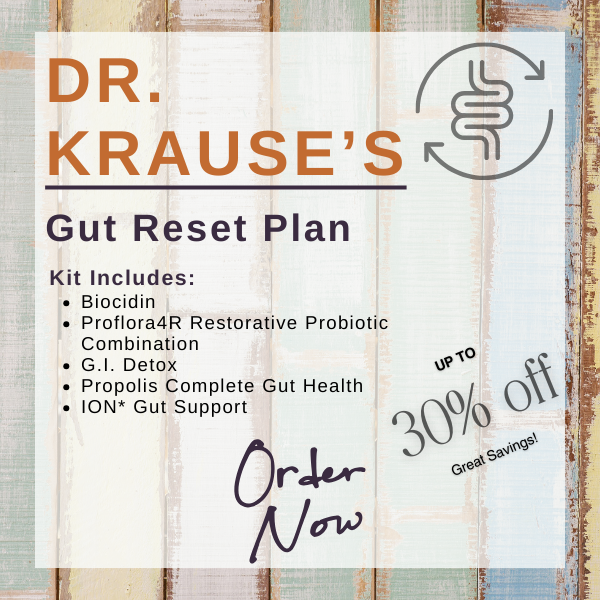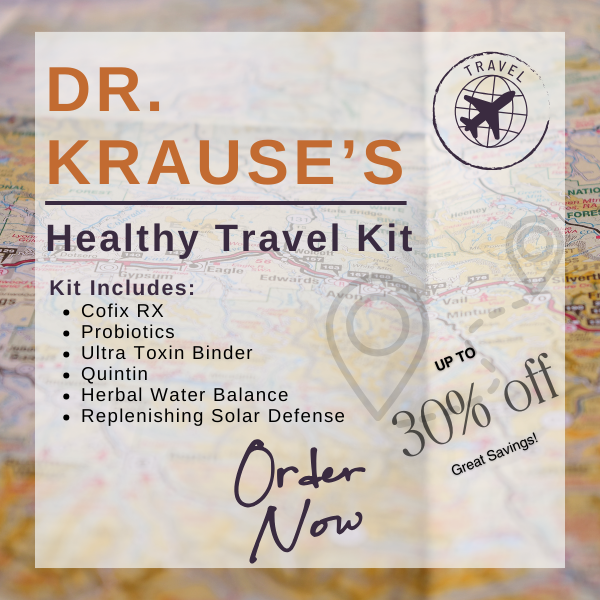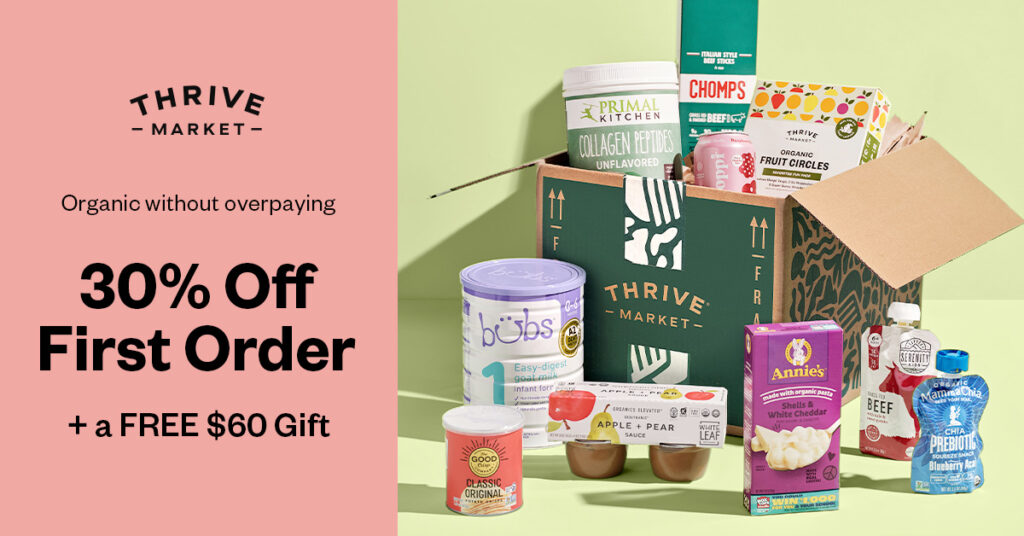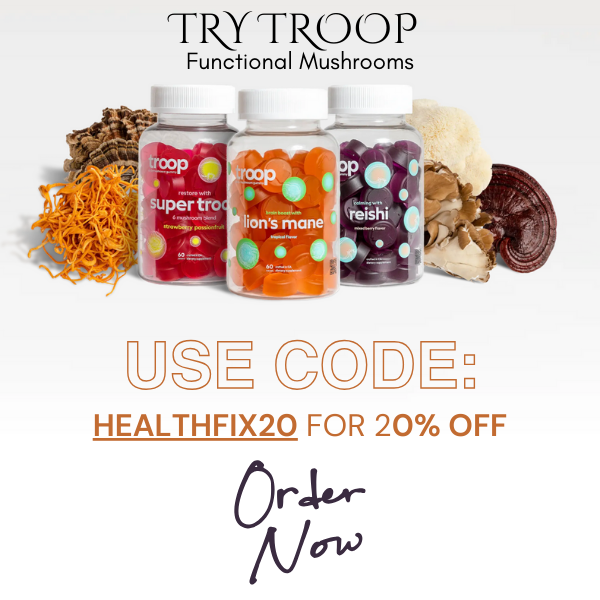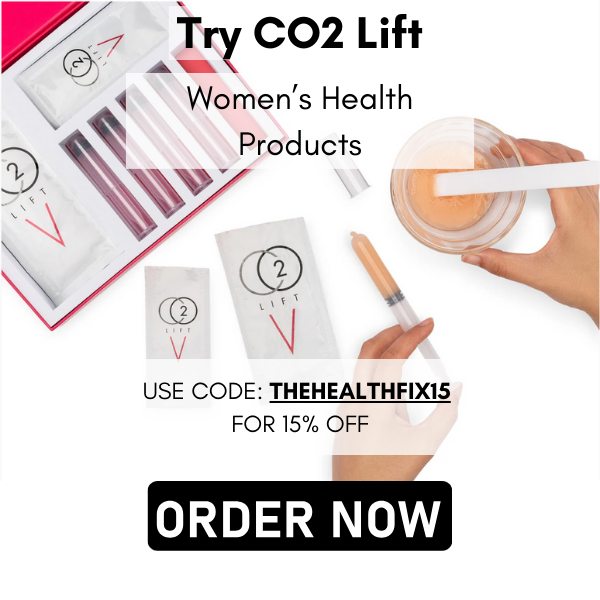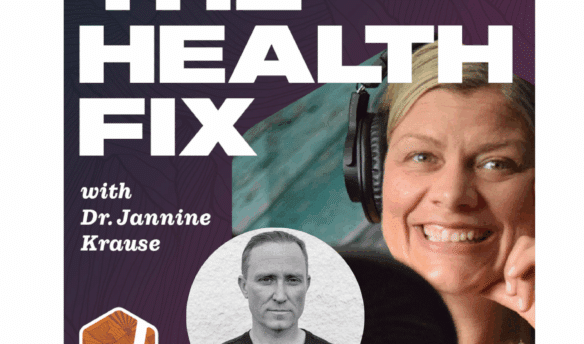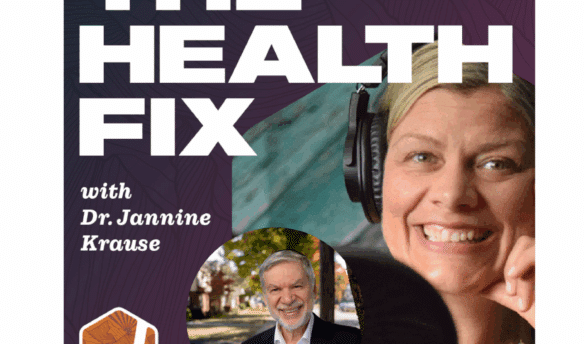In this episode, Dr. Jannine Krause sits down with Ric Scalzo, a pioneer in herbal medicine and regenerative agriculture. Founder of Gaia Herbs and now leading Kokora, Ric shares his insights into the deep connection between mind, heart, and spirit—the meaning behind the Japanese term Kokoro and why the soil your herbs are grown in matters.
Dr. Krause’s Protocols
Instructions Included
Traveling soon? Looking to detox or reset your gut? Try one of Dr. Krause’s Fullscript plans.
🔍 What You’ll Learn in This Episode:
🌿 Why your herbs and food are only as nutritious as the soil they’re grown in
🌾 How regenerative farming keeps nutrients in the soil for potent herbal remedies
🦠 Why farm-fermented microorganisms are essential for plant growth
🌱 The difference between organic and regenerative farming
🍃 How excess weed growth signals poor nitrogen in your garden
🌍 Why barren soil biomes can be damaged in just a few days
💡 Key Takeaways:
- The vibration of sound in language—how Ka in Kokora ties into Japanese philosophy.
- The importance of showing up for nature’s healing power without interfering.
- A behind-the-scenes look at organic herb farming in China and why soil quality matters.
- The energetics of herbal medicine and how plant potency is directly tied to soil health.
🌟 Resources from the Show:
🔗 Kokora – Ric Scalzo’s latest venture
🔗 Rodale Institute – Regenerative Farming Research
🔗 Ric Scalzo Research at Sonoran University
🎧 Tune in now to discover the future of herbal medicine and the regenerative power of nature! 🌿
Our Partners
Podcast Transcript
00:00The Power of Regenerative Farming
13:00Understanding Soil Health and Microbiome
19:59Innovative Practices in Regenerative Agriculture
25:04Kokora: A New Venture in Herbal Medicine
28:51Emerging Research and Product Launches
29:27Innovative Product Development: Mushrooms and Ashwagandha
32:49Sourcing and Quality: The Mushroom Supply Chain
38:24Sustainable Farming Practices in China
40:07Regenerative Agriculture: Crops and Cover Crops
44:54Future Plans: New Product Lines and Innovations
51:03Conclusion: The Importance of Regenerative Practices
Ric (00:00.202)
We looked at our turmeric when we were growing it organically. Our yield, our biomass yield per hectare was 15,000 kilos per hectare. When we switched over to regenerative farming, we yielded 80,000 kilos per hectare on the same land grown in the same soil. But paying attention to the soil food web, you know, when I say the soil food web, I’m talking about
the beneficial fungi, bacteria, nematodes, protozoa, arthropods, macro arthropods, all of these entities that exist in our soil that are responsible for carrying nutrients into the roots of the plant and responsible for protecting the plant from pathogens and are responsible for, you know, all of what our body needs to keep it healthy.
Intro – Welcome to the Health Fix Podcast, where health junkies get their weekly fix of tips, tools, and techniques to have limitless energy, sharp minds, and fit physiques for life.
Hey, health junkies on this episode of the health fix podcast, I’m interviewing Ric Scalzo. He’s the former owner of Gaia Herbs and now he’s moved on to Kokora and doing some really amazing stuff with powdered herbal formulas. Now, Ric and I get into this podcast talking about regenerative farming. That’s what they’re using to grow herbs. We’re also talking about the essence of herbs and really
getting as much as you possibly can from the herbal formula by not extracting out bits and pieces, really keeping the essence of the herbs. We also talk all about how the soil that herbs are grown in makes a huge difference for the health of the plant, but also for what you get out of it. He even gives a stat on growing his turmeric organically compared to regenerative farm style. And the yield is incredible.
Jannine (02:04.92)
but not only that, the potency goes up. How cool is that? So Ric began his journey with herbal medicine back in 1980 by studying naturopathic herbal medicine. And in fact, I consider him a legend, even though he’s very humble about that in the naturopathic medicine space, because Gaia Herbs is one of the greatest companies out there for herbal medicine. And so seeing what he’s doing next, having sold Gaia.
is pretty cool to talk about it, all about how he’s doing this on his 100 acre farm in Costa Rica. And so nevertheless, this podcast kind of lights me up in terms of my geekiness about herbs, but boy, if you were a gardener, if you were just a hobby grower potting stuff out on your patio,
He’s got some interesting insights in terms of how the soil really does make a difference. And we’re hearing more and more about this as this gets more popular, but we don’t tend to think about, we think about it for food, but we don’t think about it for the herbs that we’re taking. And really the energy that goes into the herbs that you’re taking does matter. All of this stuff matters. So let’s introduce you to Ric Scalzo. Ric Scalzo, welcome to the Health Fix Podcast.
Thank you. It’s a joy to be here with you.
Well, it’s been, I’m gonna be honest, a dream because I’ve been a naturopath for 17 years, went to school for seven before that at Bastyr. I took the long road and I have been familiar with Gaia Herbs for a very long time. So knowing that you were the founder, I was like, ooh, I am in the company of a legend. So thank you for coming on.
Ric (03:47.746)
Yeah, so many people use that word legend when talking about me on these podcasts. I, know, it’s so interesting. I years ago, I actually did receive the herbal legend award from the American from, from the natural at the natural products expo. And I never thought of myself as a legend. It kind of makes me feel old, but here I am.
man, well, you know, a lot of us who’ve been in the game a long time have seen the changes in the supplement industry. And we’ve seen just things go from true herbalism all the way into synthetic, I don’t know what’s going on, just extract land. And you know what, as a naturopath, I’ve learned that herbs have energy, they have personalities. And so when I describe herbs and I make formulas for folks with tinctures, I get really excited.
When I hand out supplements, I’m like, eh, here you go. So all of us that learned the true herbal medicine in the early days of naturopathic medicine, I think we just started to really gravitate towards the companies that were using whole medicine versus extracts. And I know you talk about that a little bit now with your new venture, which of course, I would love to hear more about here in a little bit, but tell us, you’ve been doing herbal medicine for a very long time.
What what called you to it back back?
What called me to it was, it was really a spiritual calling. That if I really wanted to get in touch with my spiritual essence, I needed to work and do that through plants. So that’s when I went off to herb school. And I believe I, with regards to herbs at least, followed a similar tradition as you at Bastyr in naturopathic school, that we believe in the whole plant.
Ric (05:43.194)
as a representation of the wisdom of nature. so when we ingest anything, when we ingest food, know, fruits, vegetables, anything that comes from our soil, that is, we have to remember that’s being constructed by the intelligent forces of nature. And, you know, we can’t really, you know, break that apart except for our
our investigation in science. But when we try to evolve what comes out of the plant, you know, how we produce the plant, it’s really hard to start extracting different segments or fragments out of the plant and say, yes, this is plant medicine.
It’s true. And I’m wondering if some of this extracting and using these extracts and putting them into research has maybe taken away from traditional herbalism in terms of people’s thought process on herbal medicine as a whole.
Well, there’s a delicate balance, think. Everybody wants evidence-based medicine, correct? So we speak of the value of science to validate what we are taking. However, in the scientific world, it’s really difficult to measure even a single plant. Let’s just take a rhodiola, for example. There’s a lot of different
components, phytochemical components that exist in rhodiola in its natural whole state. But the only way science can really justify its work is to break those components apart and measure one at a time. And then they say, you know, well, this is what is active and this is what we should really extract out of the plant. I am not necessarily a firm believer
Ric (07:48.598)
I believe if you’re going to extract and concentrate plants, you should do it in a way that concentrates the total potential of nature simultaneously. So that means all of the different components are concentrated simultaneously rather than one, you know, I like to use the word purify, isolate and structurally elucidate a particular substance out of a plant.
That is not necessarily honoring the wisdom of nature.
Yeah, yeah. And that’s kind of where it’s hard to go evidence-based, science-backed, you know, and also honor the energetics, what went into the soil, what went into the harvest, what went in, you know, with the person’s energy. And this is something I’ve talked a lot about with my clients lately is, you know, we’re buying supplements from big companies now and a lot of it’s big pharma-backed. But when we’re looking at
herbs and we’re looking at formulating herbal formulas, we’ve got a lot of independent growers and producers much like yourself. And I think there has to there is something to that. What have you learned in all of your work about the energetics behind herbs and how they grow and who, you know, is harvesting and manufacturing them?
You know, I’ve been doing it a long time, I guess over 30, 35 years. And it’s only two to three years now that I’ve come to realize that all of this is being orchestrated by the microbiome of the soil. And, you know, this puts me in touch with everything you’re talking about, the energetics, the life force, the vital force.
Ric (09:39.214)
It’s all being orchestrated by the microbiome. We call it the soil food web in the soil. And it didn’t come so clear to me until about three years ago when I adopted regenerative agriculture of our plants. that’s what I do in Costa Rica now. I grow everything under a regenerative certified status. But paying attention to the soil food web
You know, when I say the soil food web, I’m talking about the beneficial fungi, bacteria, nematodes, protozoa, arthropods, macro arthropods, all of these entities that exist in our soil that are responsible for carrying nutrients into the roots of the plant and responsible for protecting the plant from pathogens and are responsible for, you know, all of what our body needs to keep it healthy.
It’s all being conducted, orchestrated by the soil food web. And that is the microbiome. And frankly, we test it in the lab. We test our biome of the soil through the microscope in our lab on the farm. And so we’re able to understand how much vital force is being orchestrated into the plant from our soils.
That’s fascinating. That’s fascinating. guessing a lot. mean, I don’t know any other companies that are touting doing this right now. And so I’m guessing you’re kind of, what will we call it? You’re charging a new path here in terms of.
We may be, you know, maybe that’s why the regenerative organic Alliance who certifies farms gave us a gold status. Very, very infrequently do they ever issue that status, but they they see what I’m doing on the farm in Costa Rica and you know, they do their audits once a year and they are overly impressed with how we’re going about doing this because they know that my philosophy is all about
Ric (11:49.046)
you know, the healing power of nature and the V’s, medicaid tricks, not to worry, you know, that takes us back to, to what? 20, 30 years ago, right? And that’s what it’s about. And that’s the beauty of plants and taking plants as supplement, supplements is because they can hold, they can capture that healing power of, of, of nature from the soil in a direct way. And if that we don’t interfere with that, when we
dry and process the plants into extracts or whatever, then we carry that healing power of nature from the soil into our bodies.
It’s fascinating to think about and I think folks are really starting to realize, you know, the whole farm to fork and in our family we call it farm to mouth movement. But the whole process of this, are really learning about it. But I think we haven’t quite, we’re just starting with supplements and where we’re buying things from and in particular herbs. Now, Ric, I think a lot of people might be thinking, okay, regenerative farming, we’ve talked about the microbes in the soil.
How do you do this kind of thing? What’s going into the actual tilling of the soil and maintaining the microbes in it? What kind of things do you guys have to think about? What are you guys up to? Just so folks can get a little bit more sense of like, okay, regenerative. What is that?
Yeah, you mentioned a key word there, tilling of the soil. Essentially, we don’t. In regenerative farming, the motto is we always want a green carpet over our soil, and that is because we don’t want carbon to escape into the atmosphere. so having green… And that takes a lot of work. You know, when you plant your crops, you plant intercrops, so you’re…
Ric (13:43.372)
Your beds are thicker with herbaceous material, and you plant unique cover crops. In our case, we real unique nitrogen fixing crops. And then when we prep our soil each year for replanting, we don’t till. What we do instead is we use an implement called the yeoman’s plow. Have you ever heard that term?
No!
I’m so fascinated by it. It’s an attachment that is pulled behind a tractor and it’s got these long, I forget what you call them, but they’re like long metal rods that have a kind of a spike on the end and they’re pulled by the tractor and these rods are only one inch thick.
And so what they do is they go 22, 24 inches into the soil, down into the soil, and they open up points of aeration. So they open up the compacted soil, which allows for the soil food web, the micro biome of the soil, to have more water feed them, you know, and more nutrients feed them. But what we do is when we do this yeoman plowing,
which doesn’t turn over the soil, it just opens up one inch spaces in the soil. We inject what we call mountain microorganisms and we make those mountain microorganisms in our own biological lab at the farm. So how we do that is we go out and we harvest the forest a little bit, just a quarter inch, half inch of the forest floor, along with the leaves, the branches, the decaying material, some of the soil.
Ric (15:40.45)
We bring it back into the biological lab and we mix it with rice semolina. And then we add molasses to it. Then we add coffee, the coffee hulls. Then we add cloves and cinnamon, which are biological stimulants. And we take that, mix it all up into a thick kind of paste. And then we put it in a 50 pound sack and tie it at the top.
and put that sack in a 200 gallon tank of water. And we ferment it for two weeks. It’s making a unique tea ferment. And then after it’s fermented, you get about two inches of microbiological growth on top. That’s all mixed in. And then we take the liquid. And that’s what’s injected when we kind of quote, yeoman’s plow our field, which is not tilling. It’s just
opening up these spaces, we’re pushing mountain microorganisms right into the soil at a depth of 24 inches and feeding the microbiome of the soil with all this amazing growth activator. And then we spray this on our crops to stimulate growth. And we also make our fertilizations ourselves and we make our
pathogen controls ourselves, all made with this mountain microorganism. We make our own trichoderma and streptomyces, which are used to treat different plant pathogens, so that we can maintain an ecological balance of all of the organisms and creatures on and around the farm to work for the betterment of your herbs.
Wow, that’s fascinating. I’m like, okay, so one mountain microbe formula has almost three jobs here. Instead of a pesticide, which a lot of folks are very curious too about what kind of things are being sprayed on the herbs that they’re purchasing. And so it sounds like you have two organisms in particular that are protecting from
Ric (17:46.51)
Yeah.
Jannine (18:04.074)
invasive species, let’s call it that, or pests. How does, give us a little more background on that so folks can kind of understand a little bit more there.
Yeah, we not only use the mountain microorganisms as a spray on the crops, which is a biological stimulant in predator pathogen control, but we also use, we make a compost tea from worm castings, the poops of worms, which is very, how should I say, activating to the plant and to the soil. So our
Objective is not necessarily to spray something on a plant to kill the pathogen. Our objective is to strengthen the plant so it lives in harmony with the pathogen and the pathogen can work on some of the unfavorable weeds or other things that are growing alongside of the crop that we’re growing. And that’s what we’ve seen. We’re changing the whole
you know, the whole biological, you know, environment of the plant so that the plant can thrive.
That’s neat. That’s neat because as a gardener, I do not like weeding. So I don’t know if anyone does really.
Ric (19:29.944)
Well, remember, this is the important thing to know. Weeds are the first succession of growth in the spring, and they usually thrive on a crude form of nitrogen. If you don’t have the right form of nitrogen, and the correct form is ammonium nitrate, if you don’t have the correct form of nitrogen in your soil, it will feed weed growth because it wants to populate
in our soils earlier than other crops that we want to grow. So it’s important that we kind of create the right nitrogen in our soil. And that’s what the soil food web does. It’s working for our Benjamin to create balance. And you know why, if I might just tell you what the outcome of all this effort is? looked at our turmeric when we were growing it organically.
Our yield, our biomass yield per hectare was 15,000 kilos per hectare. When we switched over to regenerative farming, we yielded 80,000 kilos per hectare on the same land grown in the same soil. Not only that, we tested the turmeric for curcuminoids.
inorganic and it was about two and half to three percent grown organically when we grew it regeneratively it had increased to about eight and a half percent so two and a half fold increase in in bioactivity so that tells me nature is doing the concentration not the plant extraction we don’t need to use harsh chemicals or
you know, isolate, purify and structurally elucidate plants to get these artificial concentrations of curcuminoids in a product that lacks the wisdom of nature. You know, we can allow nature to bring the concentrations to a level that’s very wholesome and the levels that are very therapeutic for us.
Jannine (21:47.822)
Wow, I’m speechless. like, wow, I’ve definitely heard of regenerative farming and whatnot. And of course, in my really hobby garden, I haven’t gone there yet. I haven’t educated myself. But I’m thinking a lot of folks may be listening and is thinking, wow, Ric, I think maybe we need to step up our gardening game a little bit here, now what you’re telling us.
We can all do it. You could go online and on the most of your listeners might have heard of the Rodeo Institute, which is the leader in regenerative farming research. And so we’ve collaborated with Rodeo quite a lot in the past. And you can actually listen to courses, short courses on the internet on regenerative farming put out by Rodeo to teach you some of the mechanics of how to do this.
That’s neat. That’s neat. We’re definitely going to put that link guys at drjcrossnd.com so you can check that out because I do think that this is the future of growing, but it’s also something to be thinking about when we’re looking at our herbal products. Now, of course, I want to move into your new venture here and I’m thinking it’s pronounced Kokora, but I need your help. Okay. correct.
And I did a little searching that it’s a Japanese term, it comes off of a Japanese term, kokoro, for mind, heart and spirit. So give us a little background on when you were brainstorming names, how did this come about?
God, there’s quite the story. You know, I did a little research on sound. And it seems like you’re know, you’re very into this, this the energetics of sound and healing this way. And the sound of words that start with K has a unique resonance in the air, you can go online and read about it. But in the air, air, when the air hears
Ric (23:55.008)
a case sound it actually creates a vibration that triggers a memory in the brain to remember that sound or that word and also it creates a very positive vibration in the physiology so i knew i wanted a brand that started with car you car was the sound it’s a sound of nature that it’s it’s symbolic to the numerology number eleven which is a
you know, a power number. And so we chose Kokora as the name of the brand because partly because of that and partly because I really am enriched by the Japanese philosophy of a full integration of spirit, heart, mind. And to me, that’s kind of the message that I’d like to bring about how to show up and, you know, not interfere.
and not interfere with the healing power of nature, which is another premise of naturopathic medicine.
Yeah, absolutely. All right. So I guess I chose well when I found my husband with the last name that started with a K. So moving into the farming itself and Costa Rica and the products that you have currently, I’m curious. I’ve seen a lot of regenerative farming.
There you go.
Jannine (25:28.504)
practices of sorts in terms of videos and it looks like maybe Costa Rica is a hot spot for that but I’m curious why Costa Rica just
Excuse me. You know, when I I moved on, sold Gaia, I actually moved to Costa Rica. I had friends there and I had been going to Costa Rica. And when I was at Gaia, we actually had a research farm there for about 10 years. So we were researching growing a number of medicinal crops. So it made sense. I knew the land. I knew the soil. I knew the people. And it made sense. And so one of the first things I did
is I bought this farm in Costa Rica and it’s small farm only about a hundred acres and we started growing about I think now 12 tropical medicinals and then I I know you know or you probably know of one of our colleagues Dr. Paul Mittman
who is the president of Sonoran University was Southwest College of Naturopathic Medicine at the time. He and I had always talked about putting herbal medicine under the roof of a naturopathic college when I was at Gaia. And so when I sold Gaia, I made a large donation to the university, which is University, Sonoran University now. And we established the Ric Scalzo Botanical
Institute of Botanical Research and we where we have I think about 10 researchers now in tremendously well equipped science lab to study all of the all the products that CoCore is making
Jannine (27:13.55)
that’s exciting. so with research coming out, how do we find out about it? Where are things at right now?
Yeah, so every so the research that we’re doing is bioassay cell line research. So we’re using human cell lines to discover the efficacy and the you the basically, you know, you make a product and it has a structure function claim. So we want to really support that claim and support the efficacy of the product with this.
kind of in vitro, not in vivo, but in vitro study on human assays, know, cell line assays. And it does tell us, it gives us directionally a good confirmation of what these herbs are going to do in the body. you know, short of doing a clinical trial, we have some indication of how they may show up and the kind of actions they may have in the body. And,
It’s been fascinating to see the reports coming on some of these first products, some of the powders that we’ve launched already in terms of how these products manage, help our body to address stress and the stress response and looking at cortisol impact and some of the impacts on different genes and cell lines in the body. It’s really fascinating the reports that are coming in.
We will publish them in the next upgrade on our website. We’ll have all these data points coming out published from the Institute on each product.
Jannine (29:01.92)
Right. Really cool. Really cool. so folks cook or a life dot com K.O.K.O.R.A. life L.I.F.E. of course dot com. We’ll have that in the podcast notes so you can stay on top of that because I love to see research because I can reference it and use it as a tool to help educate folks. So that of course excites me to hear that’s coming out. Now of course let’s talk about the products you currently have.
Get a couple things, of course, I love mushrooms. I love ashwagandha pretty, you know, and you also have the roasted kakora lift, which I think for a lot of people, lot of folks are realizing that coffee hurts their tummy. They’re not doing so great with that. So give us a little scoop on why you chose what you chose to launch with first and go from there.
Well, we chose, we wanted to create a new category. know, ashwagandha exists as a very popular herb and mushrooms exist as a very popular category. But there are not many products that exist that properly combine in a strategic manner, ashwagandha with mushroom extract. So we have done that, created a new category, ashwagandha and super mushrooms. And we’ve
created a direction for each of the five products. You mentioned mushrooms first. And so one of our products is seven mushroom mocha, which is very convenient to take. It’s in a background of cacao and coconut milk. So all organic coconut milk powder. And we have seven regenerative mushrooms, think totally of about
1500 milligrams per dose, which is a hefty amount. It’s the equivalent of three 500 milligram capsules of mushrooms in that dose. All you do is just mix it in hot water or mix it in nut milk and you have a wonderful tasting beverage without added sugar or added sweetener. And so that’s been our most popular.
Ric (31:12.799)
products so far and rightly so because a lot of people are really looking for that immune support that mushrooms give.
I mean, they’re super popular right now. There are, you know, multiple other companies that have different versions of things. But I think what what I’m getting at with you is more that no one is is growing them like you are. well, the processing, correct?
Yeah, growing of our, where we source our mushrooms is sourced by friends of mine who have, you know, China has been growing mushrooms, producing mushrooms for thousands of years. And there’s nobody in the world that knows how to grow mushrooms better than this ancient tradition of farmers in China. So
my friends actually collaborate with mushroom farms in remote regions in northern China. And they’re like, I want to say over 10,000 mushroom farms that they collaborate with to grow these mushrooms and they get them certified organic. And I’ve never seen anything quite like this in terms of the purity and the potency and the cultivation integrity of
of this mushroom operation. we purchase our mushrooms from our friends who are responsible for this cultivation in China.
Jannine (32:49.07)
Interestingly enough, a lot of folks, you know, right now are kind of like, oh, gosh, China so polluted. would I don’t want anything from there. And it’s one of my struggles I have as a acupuncturist and Chinese herbalist background trying to support Chinese herbs to can you speak a little bit to it? Because you had said they’re growing practices. You guys have checked that out. You know, it’s really up to par. They’re organic. Are you guys third party testing to help, you know, folks be sure that
you’ve got.
Yeah, all of the above. My partners who grow from Namex, Namex is the name of the company, they grow their mushrooms over there. They do tremendous amount of third party testing for beta-glucan levels in the mushrooms, which are the active polysaccharides. And we also validate that. When we get the mushrooms here, we do a validation lab test, send it out for our own independent lab.
test to validate their claim of activity. And you know, you talk about dirty China. I go to China every year once or twice a year. And I always come back and I say, I’ve never seen a major city like Beijing so clean. You do not see trash on the road. You do not see anything on the sidewalks or on the curbs or any kind of trash.
And it’s impeccable how clean that city is with rose bushes along the highways, ginkgo trees along the sides of the highways. So much plant life. You have multiple, a half a dozen or eight or 10 parks in Beijing that are there too. they’re well, well kept and clean. There’s no trash in the parks. I’ve never seen a big city like Beijing. And then when you get out to the countryside,
Ric (34:48.662)
which I have a lot, you know, up in the mountainous region where the Great Wall is. It’s the same. It’s just very well kept. know, at least where, you know, I’m a tourist, so I’ve gone to these places. Now, I have been on many farms in China as well, and it’s daunting how they get things done.
I will share a story because even I was amazed. I wanted to go to an organic apple farm. so my doctor friend was taking me in the countryside and we saw these apple farms and I said, Dr. Lou, how can these apples all be organic? They’re all the same size, all the same shape, all the same color. How are they doing this organically? he said, Ric,
It’s all organic. And I said, can you show me? And so we went down to the farm from the roadside and this is what we saw. We saw that the trees had a, all of them were at the base of the trunk of the tree where the ground was covered with wood ash, which is a natural deterrent to predator insects. And then they,
when the apples start to emerge in the spring, and now this is kind of daunting to think about, but every apple is covered with a little individual bag. And there could be hundreds of apples on a tree. So every apple is grown within a bag so that it does not have any detrimental effect.
from the pathogens. So the apple grows that way and then, excuse me a moment.
Ric (36:55.02)
And then when it’s time for the apples to ripen, they remove the bags, they put a reflector tarp underneath the trees, they remove the bags and the tarp reflects the sunlight, and all the apples mature and ripen simultaneously from the sun coming above and coming up from below.
I’ve never seen anything like it because the amount of labor to cover and remove those bags, you know, at the onset and at the ripening stage is really, you know, amazing. And sure enough, these were all grown certified organically.
Wow.
This is what you don’t hear when you think about China.
No, no, we only hear the how polluted and things of that nature. But I mean, the sad reality, go to Seattle right now and drive down I-5 anywhere between Seattle and Portland. it’s there’s trash along the side of the road. There’s graffiti everywhere. I mean, it’s not pretty. Yeah. So hearing, you know, a completely different story from China is quite. It’s it’s exciting for me. I want to go visit. I’ve never been there, so I can’t say anything to speak to it.
Jannine (38:16.93)
But I have heard from a lot of folks that, yeah, the cities are clean. It’s different than we’ve been told. So this is good for us.
That wasn’t a sole experience. I went to a schizandra berry farm 200 acres of trellis schizandra berry bushes impeccably maintained organically You know, again I’ve never seen anything like it I guess the reason why they can do this is because their labor force is so cheap and So inexpensive for the workers whether or not that’s a good thing or viewed as a good thing
or a bad thing, know, everybody in China has to work. And, you know, so, you know, they’re working on these farms and they may not be getting paid an awful lot, but they have a job and they’re working, being productive. And, and, you know, these Shizandra berries were just amazing. So it’s, it’s just, you know, I wish more people would learn about some of these.
ancient practices that are used because I for one am learning every time I go to China and learn more.
I’m fascinated. I’m fascinated. I feel like I need a field trip now. to sign myself up for it because yeah, just thinking about, we have two apple trees here, thinking about putting bags around every single apple sound, that’s daunting. But maybe figure it out over the course of a couple of days. But just something to think about and oh my gosh, how much goes into just growing in general.
Jannine (39:58.49)
at your farm in Costa Rica, you’re growing turmeric, the curcumin, you know, why am I saying turmeric?
Yeah, we’re growing turmeric, we’re growing ginger, we’re growing lots and lots of ashwagandha, we’re growing holy basil, another favorite herb, we’re growing bacopa, which is a herb that’s really becoming popular for cognitive function. And we grow that in our greenhouses. What else are we growing? We’re starting to grow, we’re putting in 10,000 moringa trees this spring.
And we’re growing Chinese skullcap and mucuna. I don’t know if you know mucuna. Do you know mucuna? A of people don’t. We’re growing lots of mucuna there, both as a cover crop and as a medicinal crop.
Interesting. I had no idea of using it as a cover crop. And for those of you thinking, what is Makuna? mean, it helps quite a bit with boosting dopamine. And a lot of us need that. We don’t necessarily have to have Parkinson’s to get a dopamine. I feel like being in perimenopause, heading into menopause, dopamine is like amazing. It’s my drug of choice. So I’m hearing Makuna going, ooh, really? Tell us more. Tell us more.
Twice!
Jannine (41:24.27)
how let’s let’s educate folks a little bit on cover crop and how that works and in the whole synergy of growing.
Yeah, so we have two primary covers. One is Makuna, which we use in the rotational sequence. And the other one is, common name is Sun Hemp, the Latin binomial is Crotilaria. And it grows, unlike Makuna, which grows as a long spreading vine, Crotilaria grows up and might grow to about four feet tall and then goes to flower. And I started to grow this as a companion with Ginger.
And so in the ginger beds, we grow a couple of rows right in the bed of sun hemp or Crotalaria. And it gives a canopy of shade, which ginger likes. creates a little bit of company. Ginger likes to have company in the soil. And so it creates some company for ginger. But at the same time, the roots have these little nodules and
those nodules in an early stage of growth release the proper, the correct form of nitrogen into the soil, which stimulates the ginger growth. And also, you know, if you have Fusarium or Ralstonia in your soils, which is common in Costa Rica, those are common bacterias, the Fusarium or Ralstonia will get attracted to the roots of your cover crop.
or any weeds that are growing in your bed and not your primary crop like ginger. And so it’s a nice way to protect the roots from pathogen damage. So we use sun hemp in a number of crops and then we use the mucuna off season. Most of our farm off season is planted in mucuna for the nitrogen.
Ric (43:23.598)
for the amount of biomass that it creates that decomposes and drops right into the soil. So all year round, our farm is green. I mean, it should be green anyway, but we don’t let the soils go barren. Because when they’re left barren, the sun can damage the biome of the soil and destroy it within days.
Wow. And I’m guessing your growing seasons are dependent because Clostridium being a warmer climate are dependent on rainy season compared to dry season.
Yeah, beautiful insight. And no, it’s true. We actually grow in dry season. It’s summertime there and we grow, it’s dry season. So we’re growing our crops. They got planted in the field in late December, early January, and they’re out in the field now and they’ll grow until about July, August, and then we’ll take the harvest in and then we’ll plant the cover crop. Makuna likes the rainy season. So that’s when we
know, rainy season starts in full gear in September, October, November.
So many things to think about, but I love that all of what you’re incorporating into the Kokora farm. Now of course I’ve got to ask, are you doing any tours? Because I know a lot of people go to Costa Rica for vacation. Is there anything on the horizon for tours or for tasting?
Ric (44:54.126)
There are we’re doing a and well, first of all, anybody can contact me and if they’re in the area, I can post them and, you know, share the experience of our farm with them. I’m happy to do that. I’ve done that a lot, but we are holding some contests that will be managed at the retail outlets that are carrying our products where we have an email entry.
for contests for a free trip to Costa Rica for a weekend retreat with our team down there. And we’re doing that once a month starting July, August, September, offering free trips to Costa Rica.
cool. I have to have to figure out what what stores are carrying you so that we can we can send folks. do see it on your website. So so guys, you can go over to Kokora life dot com and you’ll see the where they’re located in.
Which store is looking,
So Ric, you have so much going on. are so many different things. My next question is, what’s next for you? What’s on the horizon? So you’re kind of thinking about.
Ric (46:08.494)
So the next product lines that we’re launching are the super mushrooms, which will include a one of the regenerative herbs from our farm. Like three of the mushroom products will have ashwagandha root and leaf and our cordyceps product will have a mucuna and our lion’s mane product will have bacopa all regeneratively grown. And then we’re launching a line of single certified regenerative organic herbs.
That will be turmeric, holy basil, bacopa, passion flower, ginger, and ashwagandha. And then after that, come May, we’ll be launching a line of regenerative organic formulas. And those will be formulas for adrenal health, for sleep, for energy, for stress, for memory, and for energy, and if I had said that already, and for allergies.
So we’re coming out with these products and these are in capsule form, they’re vegetarian capsule and they would include the herbs, the crude herb coming off the farm in addition to the extract of the crude herb that has been freeze dried without any excipients. So you know a lot of products these days contain maltodextrin or magnesium stearate.
as excipients, but ours will be excipient-free and super concentrated with freeze-dry technology.
Another amazing thing to hear about because yes, the less junk we have in our products we’re taking, the better and more potent too.
Ric (47:52.78)
much more potent, much, more potent. But the thing, and I just want to just connect back to what you said at the beginning about, you know, extraction and losing the vitality. You know, when we, when we do it this way, we’re concentrating all of the wisdom that’s in the plant represented in the phytochemistries. All of it’s being concentrated in the same proportion to each other at the same time.
So we’re not interfering with nature’s intelligence. that’s the difference. That’s the big difference of what Kokor is doing. We’re doing it in harmony with nature, and we’re really creating whole plant potency.
makes perfect sense. It makes perfect sense. And I think I have one last question here that folks might be thinking and wanting to ask you about because you’ve got the powdered herbs in. And a lot of people will think, well, if I put something into a capsule versus a powder, is there a difference in terms of energetics for the body in terms of absorption in terms of potency for one
person to the other in your experience, have you seen why someone would want to choose a powder versus a capsule version of something?
Well, the powders are a nice way to, you know, lot of people don’t like to take capsules and the powders are a nice way to take a therapeutic dose in a very palatable form as a mixture, you know, to hot water or to nut milk or in a smoothie. Or I’ve made one of our products in the powders is Adapt and Thrive. I made these most amazing Adapt and Thrive bars.
Ric (49:39.724)
Stress-free bars, which you could eat all day long. They taste so good. So you can make, you add them to certain recipes like that. And, you know, I like to tell remind people that taking one dose of the powder, which is four grams, is the equivalent of taking eight 500 milligram capsules. So that, as you know, that’s quite a, you know, a potent dose. And, you know, the beautiful thing about the capsules
is how pure and how concentrated they are in a full spectrum whole plant manner. You know, making the claim of, you know, no no excipients, no maltodextrin, no magnesium stearate, no nothing like that added to the capsule means what’s in the capsule is pure herb. It’s a combination of extract and the crude herb powdered down along with it.
Good stuff. I personally love powders. I’ve geeked out on making spice mixes with them and recipes with them and just kind of going that route because it just I think it makes it fun compared to the capsule situation. I don’t know. It’s creative. But like you said, you can get a lot more in a powder and not have to take so many capsules. So it’s it’s that juggle.
Exactly.
Gosh Ric, so much good stuff. I’ve learned so much today. I’m excited to see what what you guys have in store going forward and I’m like, man, if I can get my butt down to Costa Rica, I definitely want to check out what you guys are up to.
Ric (51:16.073)
Yeah, come visit me.
would love to. I would love to. Well folks, we definitely want you to check out kokorallife.com. Now Ric, is there anywhere else that folks can find you? They can check out what you guys are up to. Do you have Instagram or Facebook or TikTok or any of those things where
Yeah, we’re Kokora Life on Instagram and Facebook and LinkedIn. And then we’re on Amazon on the buy shop center. And so people can search and buy our products on Amazon or they can do it on our website through Shopify on our website. So you mentioned our website kokoralife.com. of course,
All the stores that carry us now, there are hundreds of stores around the country and that store locator list is also mentioned on our website as well.
Makes it super convenient for us to search and figure out where we can find it. I’m so excited to try things out and I really do need to get my homework and my garden up to speed in the regenerative Farming department here. So I’m gonna come down and visit at some point here. Maybe we’ll do a repeat podcast with me down by you fun Gosh Ric, thanks so much for what you’re doing and helping folks learn more about regenerative gardening and also herbal medicine. It’s so
Ric (52:34.519)
that.
Ric (52:45.326)
It’s my joy, my pleasure. Thank you.
Hey fellow health junkie, thanks for listening to the Health Fix Podcast. If you enjoyed tuning in, please help support me to get the word out about the podcast. Subscribe, rate and review and just get that word out. Thanks again for listening.

